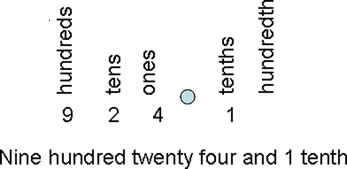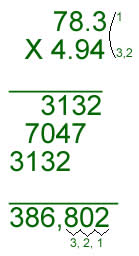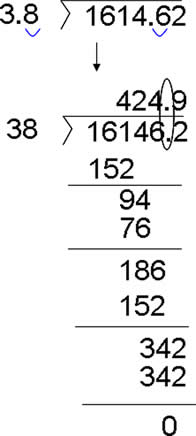
GEAR UP FOR LIFE
MATH MENTOR: Decimals
|
Whole numbers go from zero all the way
to eternity. 0,1,2,3,4,5... But not every number is a whole number. What if you had less than 1 of something: less than 1 dollar, less than one whole football game; less than 1 one apple? How would you talk about that part? The decimal system lets us write
numbers of all types and sizes. How? We use that little dot, called
the decimal point!
Every number to the right of the decimal point is less than one. Every number to the left of the decimal point is a whole number.
You can understand the concept easily with money. $5.65 = 5 whole dollars with 65 cents (parts of a dollar) left over. In the decimal number system, the value of a digit of the number depends on its place, or position, in the number. The digit to the left of the decimal point has the value of ones, or 0-9. The values move by multiples or ten. To the left, you multiply by 10.
As you move to the right of the decimal point, the value of each place (place value) is divided by 10. We use the "th" ending for those numbers to show they are parts. To add or subtract with decimals, just keep the decimal points aligned (below or above each other). Then place the decimal point directly under in the total. NOTE: the decimal point is immediately after a whole number.
Multiplying with decimals
To divide decimal numbers:
Now you try it! 1. 146 - 98.3 = 47.7 2. 398.43 ÷ 398.43 = 15.56 3. 487.41 + 54.67 = 542.08 4. 42.9 X 2.5 = 107.25
|
|



